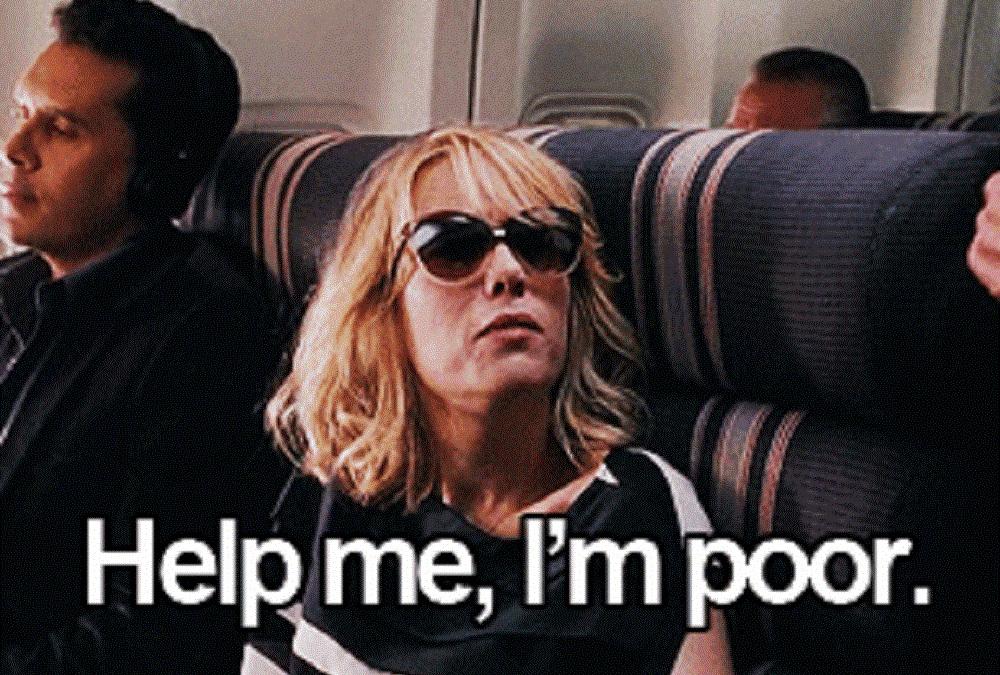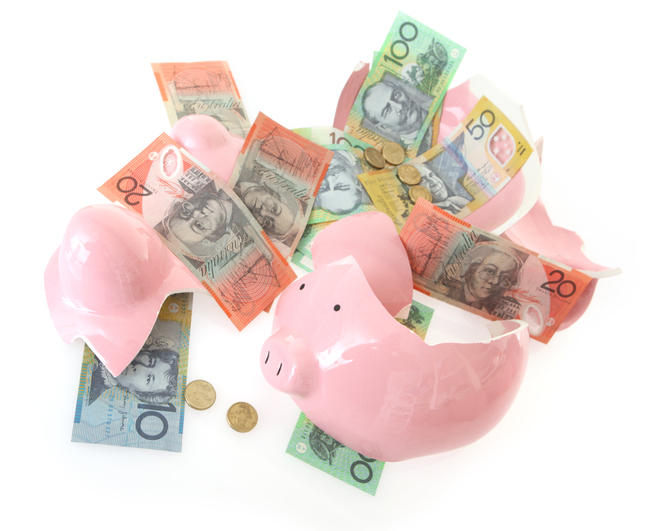
We’re in the midst of uncertain times right now, with some parts of the country still locked down tight, and others warily opening up again. In some areas, businesses that were shut by COVID-19 – restaurants, bars, gyms and even cinemas – are coming back to life, and there’s a faint sort of hope that things might get back to normal at some point in our lifetimes.
There are fears, though, that we’re headed for disaster in a few months time, when Australia hits a “debt cliff”. This sharp and sudden economic drop could see businesses collapsing, and jobs that seemed safe suddenly gone. To try and make some sense of the situation, and work out just how worried we should be, we spoke to independent economist Saul Eslake to explain what the debt cliff is, and what can be done to get us through the next few months.
First things first, what is the debt cliff?
This term was originally coined around a decade ago in America, to describe a situation in which emergency support measures, put in place by the government to deal with a financial crisis, abruptly come to an end. In Australia, we have a number of these ’emergency support measures’ helping to prop us up right now, and chances are you’re being helped by at least one.
First of all, there are programs like JobKeeper and JobSeeker, designed to support workers and keep them afloat as businesses struggle. Then there are other measures such as “debt payment holidays”, extended by banks to small business customers who may have taken a financial hit. There are also schemes put in place by the government to protect businesses from bankruptcy proceedings.

If things had stayed as they were, Australia would have hit its “debt cliff” on September 30, when these programs simultaneously expired, and that’s when things could’ve gotten bad.
“The risk was that a lot of people whose jobs had been preserved by JobKeeper would suddenly lose those jobs, and that people who were getting by on JobSeeker would all of a sudden fall back to the miserly old NewStart allowance,” Eslake told PEDESTRIAN.TV.
Not only that, there was a risk that businesses unable to repay their debts might go to the wall in September, once debt repayment holidays and came to an end.
“There was a risk, if nothing was done about this so-called cliff, that we could have been thrown back into negative growth and rising unemployment in the December quarter.”
What has the government done about this?
In July, the government announced that the JobKeeper program will be extended until March 31, although there will be a number of key changes. For one, the $1500-per-employee subsidy, given to businesses whose revenue took a hit, will drop to $1200 for most people after September.
Many workers in casual and part-time roles actually saw their pay rise as a result of this subsidy, although Eslake tells us that the government’s new plan will correct this “anomaly”, and people working under 20 hours a week will receive $750 from September, which will be reduced to $650 in 2021.
The JobSeeker supplement will continue, but will also be reduced, and recipients can expect to get $815 per fortnight after September.
It looks like young people in casual and part-time jobs will be among those most affected by these changes, and will see their incomes shrink come September once the temporary JobKeeper boost has gone away.
How are things looking for businesses?
Part of the reason for extending the JobKeeper and JobSeeker benefits a little longer is to give the economy some extra time to bounce back. It’s hoped that we’ll be on the way to recovery by March, but this could be an overly optimistic view. Many businesses are hurting for revenue now, and are remaining afloat thanks to JobKeeper. What happens next year if the support dries up and they still can’t pay off their debts?
Eslake told us that the banks have, off their own bat, agreed to give businesses a few more months to pay back their debts, but even then the outlook isn’t necessarily great. “Banks have to ask themselves and their customers, ‘Are we really helping you by extending you more credit, if at the end of the day you and I both know that you won’t be able to pay it back?’,” he said.

“Let’s say a small business might owe $300,000, and they might ask for another $50,000 in credit to tide them over until March 1, hoping that after that, they’ll be right. The business owner and the bank need to have an honest conversation about the fact that, if and when they go bankrupt, they’ll just end up owing $350k instead of $300k.”
Which businesses are most at risk?
The global accounting and business advisory firm BDO released an analysis of which industries have withstood the worst effects of the pandemic so far, and which ones might feel long term pain. Unsurprisingly, businesses like grocery stores, bottle shops and other essential services have done well throughout COVID-19, as well as online delivery services. Companies that sell office supplies have also thrived, as more people work from home. The same goes for businesses selling fitness gear.
Other sectors, like professional services – lawyers, accountants and the like – may have felt some pain, but are expected to bounce back, which is also the case for many in healthcare and physiotherapy-type jobs.
That leaves a worryingly large number of industries that might find themselves in trouble if and when we go over the debt cliff. Retail (not counting the types of businesses mentioned above), hospitality, entertainment, tourism and hotels are all at risk of long term pain according to BDO, as well as transport, education and construction, and these are the industries in which many young people find employment.
What does this all boil down to?
With the government extending programs like JobKeeper and JobSeeker, and banks extending debt repayment holidays to businesses, there’s no longer an immediate risk of the economy falling off a cliff on September 30.
While we may still be in for quite a bit of financial pain, this added reprieve will at least give the government the chance to look at which sectors of the economy are bouncing back, and which still need support as we attempt to recover from the effects of COVID-19.
According to government data, the industries that employ the most young (18-24 year old) workers in Australia are retail trade, accommodation and food services, and construction. All three of these areas are the ones that BDO identifies as being at the most risk of long term pain, meaning unfortunately, there are tougher times still to come for many young Aussies.



